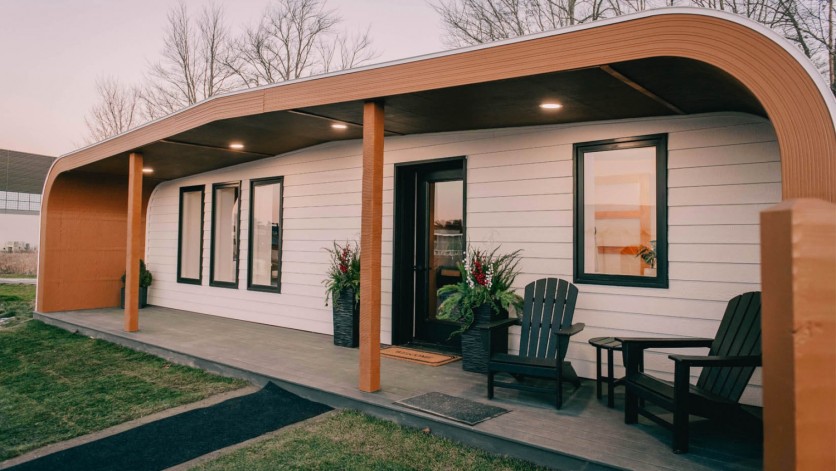The first 100% bio-based 3D-printed home, BioHome3D, was unveiled on November 21 by the University of Maine Advanced Structures and Composites Center (ASCC).
The Hub and Spoke program of the US Department of Energy was used to fund the development of BioHome3D by the University of Maine and Oak Ridge National Laboratory. MaineHousing and the Maine Technology Institute were also partners in the project as well.

The bio-based home stands at 600-square-foot and features the best of what 3D printing can offer: from printed flooring, roof, walls, and wood fibers, to bio-resins.
With 100% wood insulation and customizable R-values, the house is completely recyclable and well-insulated.
The printing technology's accuracy allowed for the almost complete elimination of construction waste, according to the team behind the project.
"With its innovative BioHome3D, UMaine's Advanced Structures and Composites Center is thinking creatively about how we can tackle our housing shortage, strengthen our forest products industry, and deliver people a safe place to live so they can contribute to our economy," Gov. Janet Mills said in a press release statement.
Housing Shortage
There is a "crisis-level shortage" of affordable housing in Maine and the US as a whole, according to the team. The National Low Income Housing Coalition said that the country needs more than 7 million affordable housing units.
According to the Maine Affordable Housing Coalition, there is a shortage of 20,000 housing units in Maine alone, and that number is increasing every year.
Additionally, more than 60% of renters who are low-income in the state pay more than half of their salary for housing.
The dual problems of labor scarcity and material price hikes brought on by the supply chain intensify this problem.
Hence, the team claims that their technology seeks to address shortages and supply chain problems that are increasing costs and limiting the availability of affordable housing.
Due to the utilization of automated manufacturing and off-site production, less time is needed to construct and furnish the home on-site. Using wood fiber as a printing feedstock that is readily available, renewable, and locally supplied decreases reliance on a limited supply chain.
The team claims that these products are more resistant to labor shortages and global supply chain shocks, and they help revive regional forest product industries.
Read Also : Engineers Develop a Novel Nanoscale 3D Material That Can be Produced at a Speed of 100 mm/s
Maine Winter
The prototype of BioHome3D is currently mounted on a foundation outside ASCC and equipped with sensors for thermal, environmental, and structural monitoring to verify how well it functions throughout a Maine winter. Researchers hope to use the data collected to improve upcoming designs.
Four modules of BioHome3D were manufactured, moved to the location, and assembled in less than a day. Only one electrician was required on-site, and electricity was up and operating in less than two hours.
The prototype was created using the largest polymer 3D printer in the world, which was also used to create the largest 3D-printed boat in 2019.
This article is owned by Tech Times
Written by Jace Dela Cruz
ⓒ 2025 TECHTIMES.com All rights reserved. Do not reproduce without permission.




